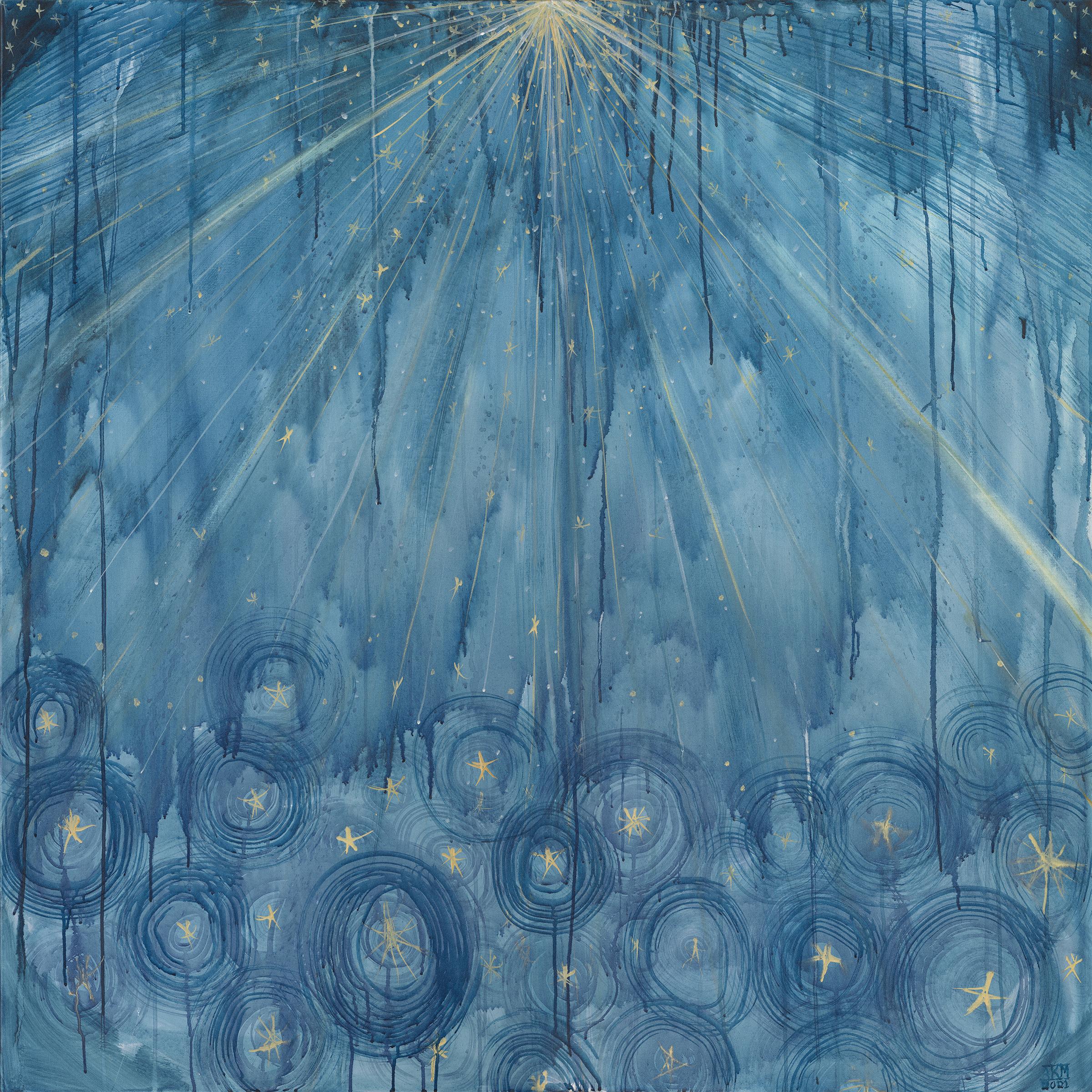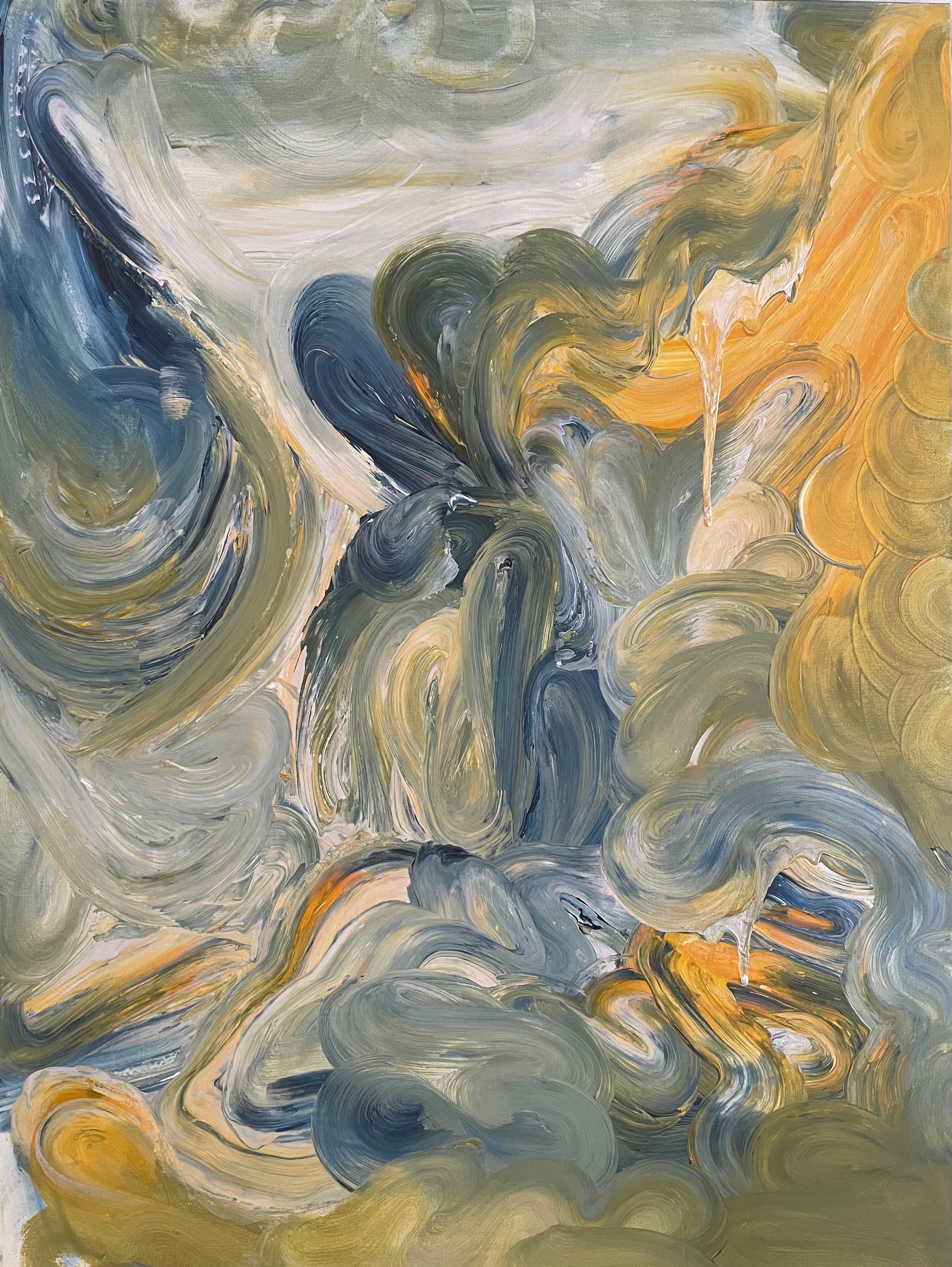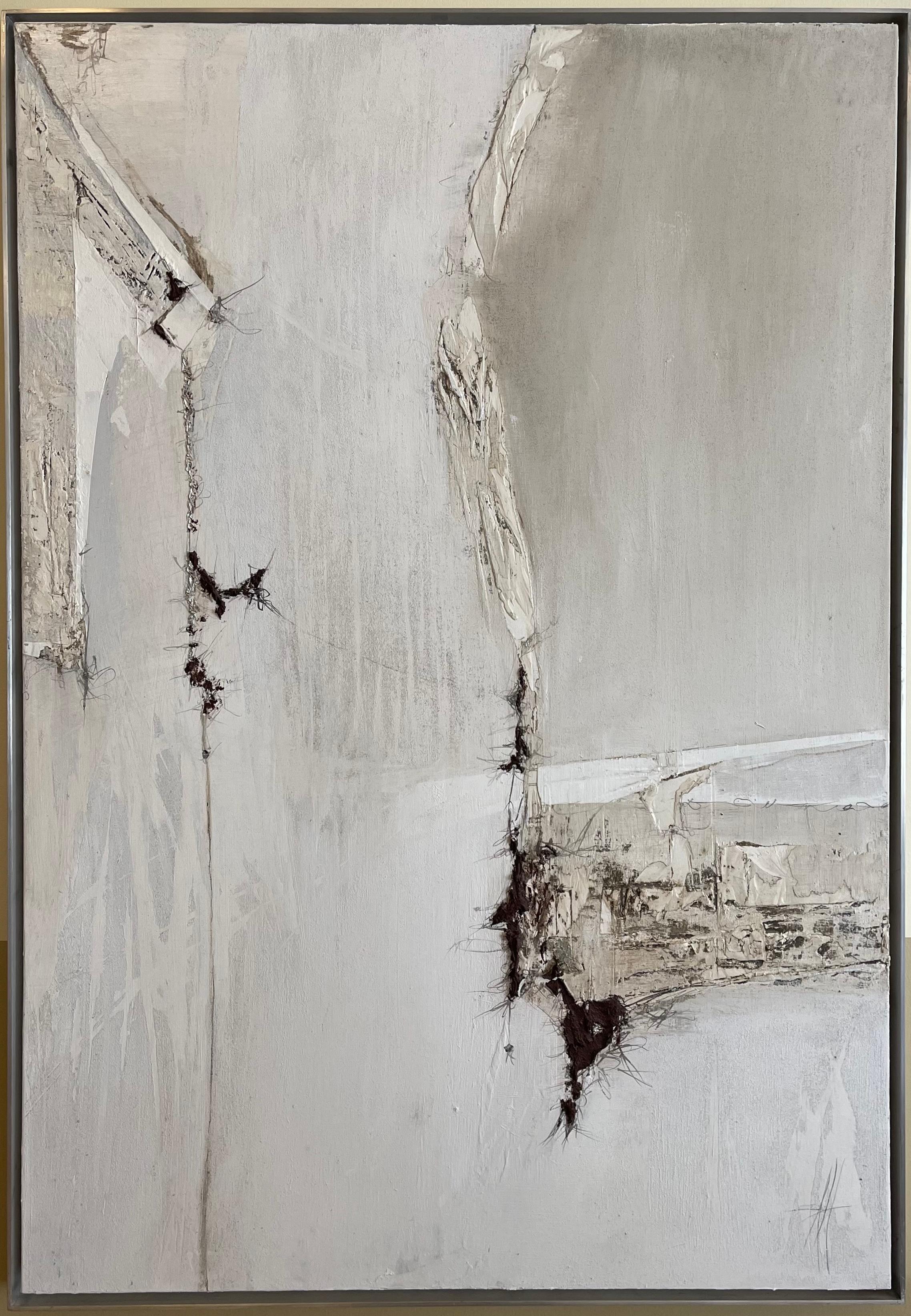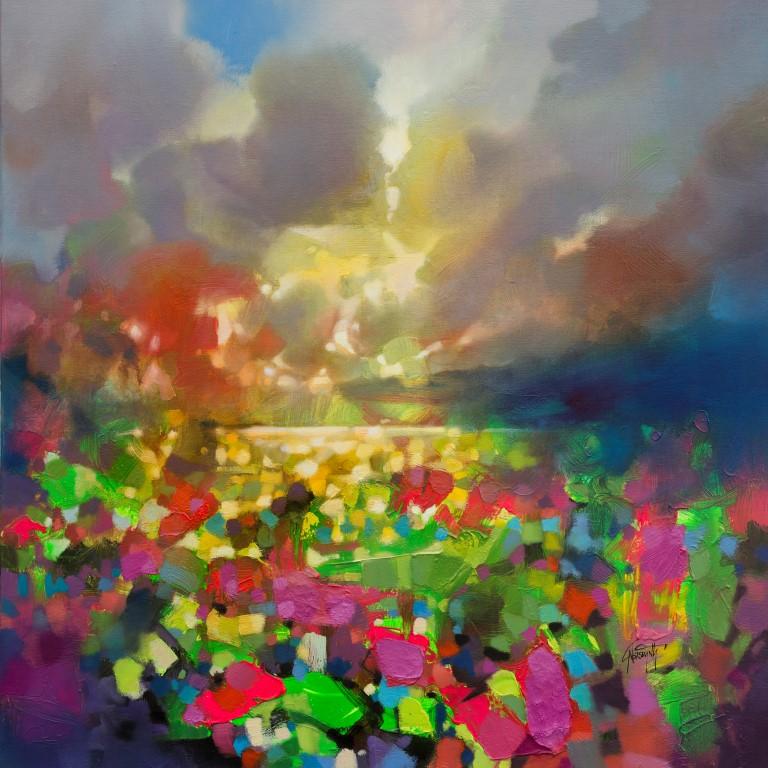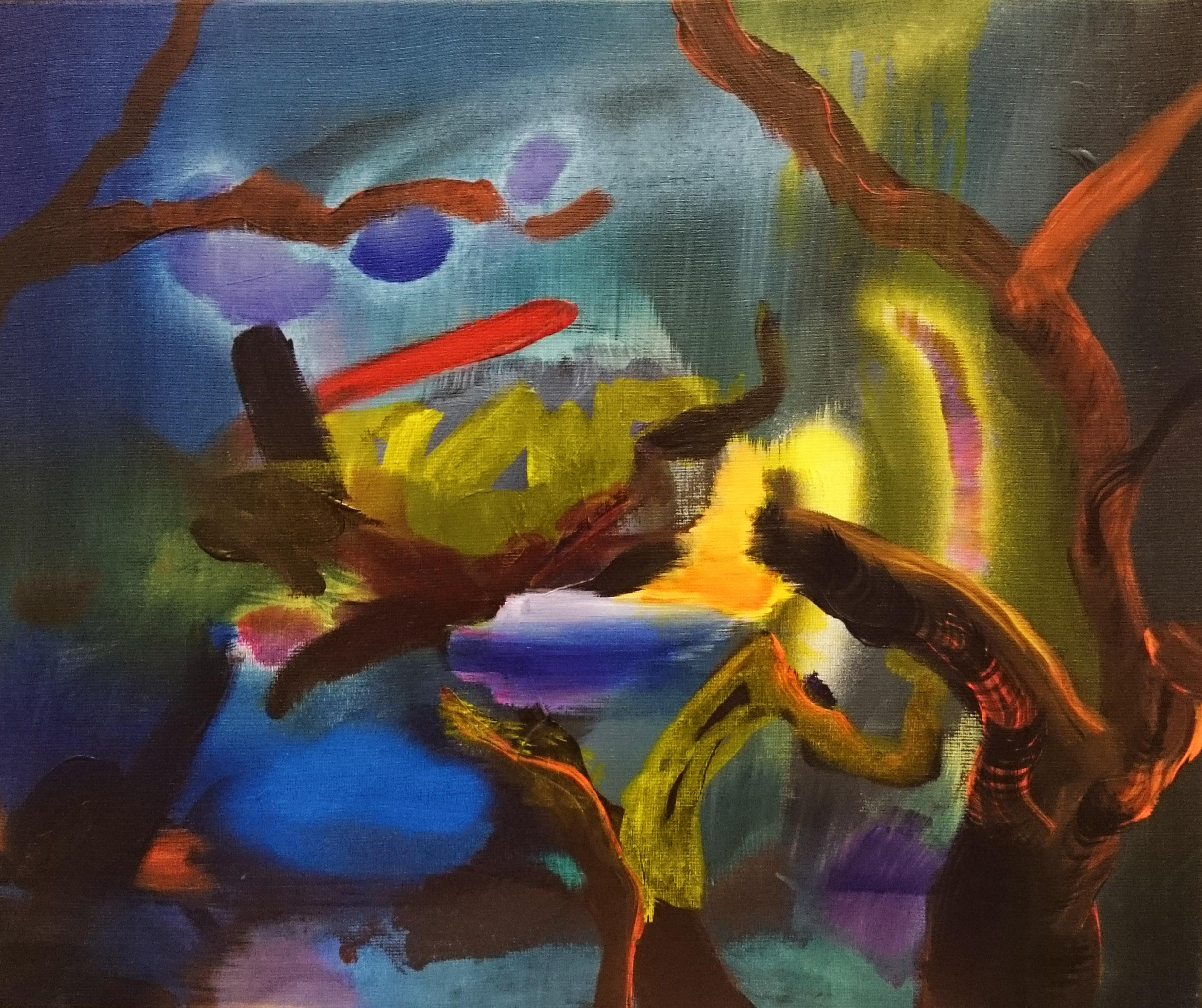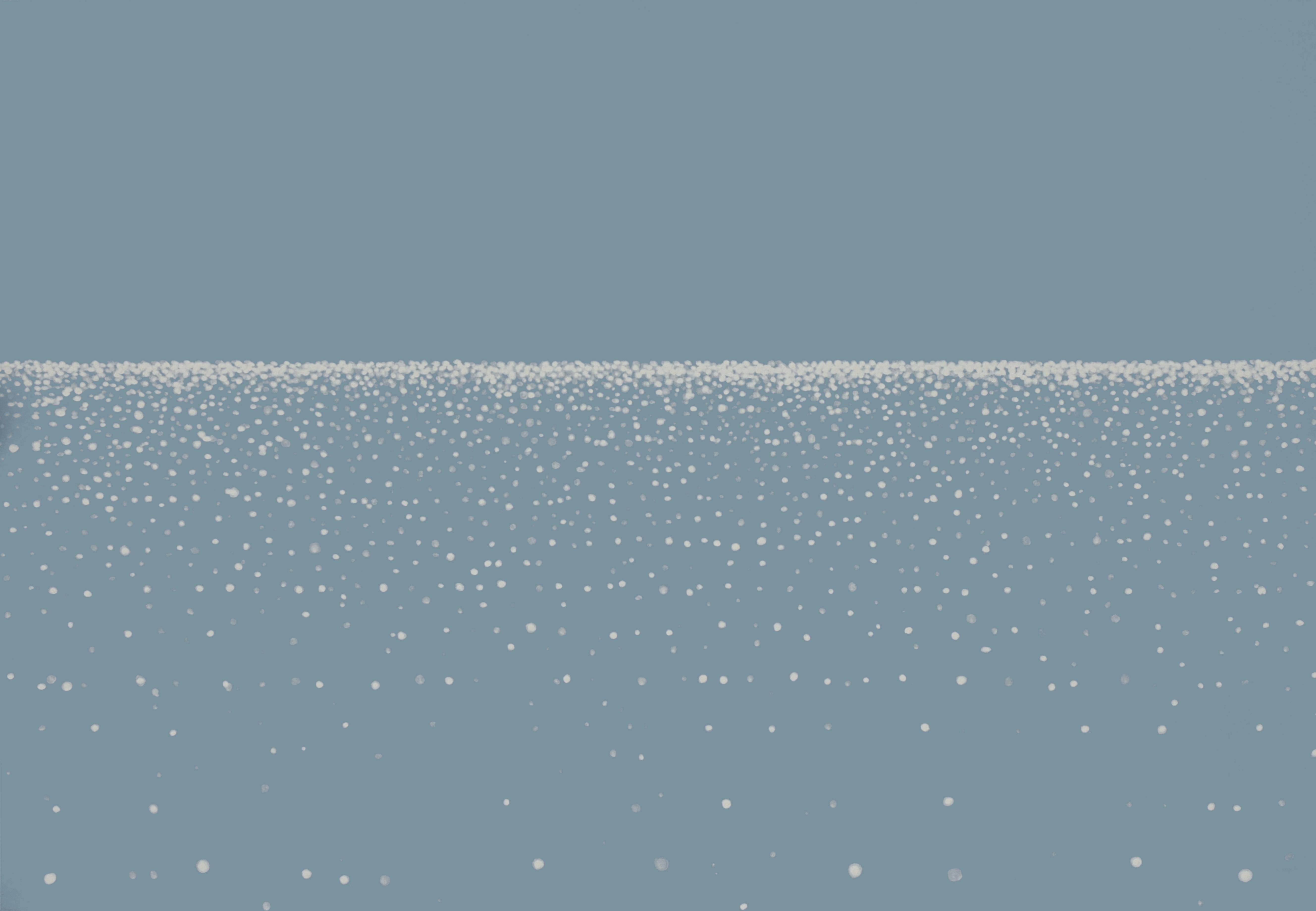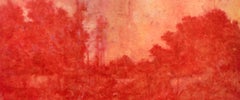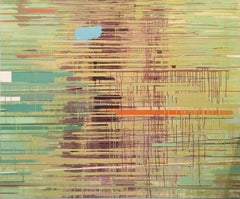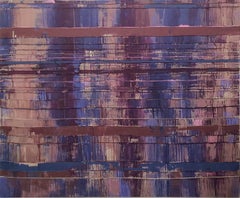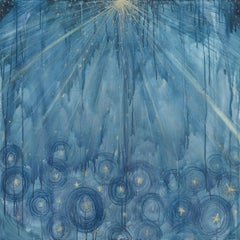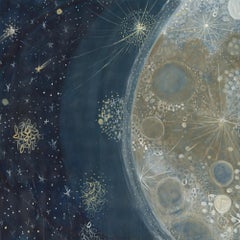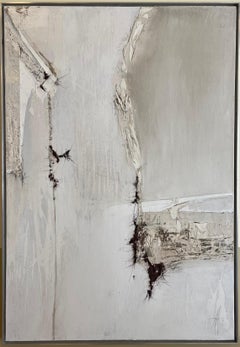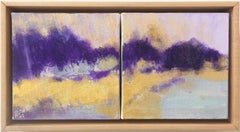
Violet Hills (Abstract Landscape Painting in Yellow & Purple with Wood Frame)
View Similar Items
Want more images or videos?
Request additional images or videos from the seller
1 of 7
Nancy RutterViolet Hills (Abstract Landscape Painting in Yellow & Purple with Wood Frame)2019
2019
$750List Price
About the Item
- Creator:Nancy Rutter (American)
- Creation Year:2019
- Dimensions:Height: 7.25 in (18.42 cm)Width: 13.25 in (33.66 cm)Depth: 2 in (5.08 cm)
- Medium:
- Movement & Style:
- Period:
- Condition:
- Gallery Location:Hudson, NY
- Reference Number:1stDibs: LU2275189432
About the Seller
5.0
Platinum Seller
Premium sellers with a 4.7+ rating and 24-hour response times
Established in 1991
1stDibs seller since 2013
595 sales on 1stDibs
Typical response time: 1 hour
Authenticity Guarantee
In the unlikely event there’s an issue with an item’s authenticity, contact us within 1 year for a full refund. DetailsMoney-Back Guarantee
If your item is not as described, is damaged in transit, or does not arrive, contact us within 7 days for a full refund. Details24-Hour Cancellation
You have a 24-hour grace period in which to reconsider your purchase, with no questions asked.Vetted Professional Sellers
Our world-class sellers must adhere to strict standards for service and quality, maintaining the integrity of our listings.Price-Match Guarantee
If you find that a seller listed the same item for a lower price elsewhere, we’ll match it.Trusted Global Delivery
Our best-in-class carrier network provides specialized shipping options worldwide, including custom delivery.More From This Seller
View AllRoad to Olana (Horizontal Monochromatic Purple Landscape Painting on Canvas)
By Richard Britell
Located in Hudson, NY
25 x 55 inches
horizontal, monochromatic lavender purple landscape acrylic painting on canvas
This contemporary, horizontal landscape acrylic paintin...
Category
21st Century and Contemporary Contemporary Landscape Paintings
Materials
Canvas, Acrylic
Fallow Field (Impressionist Abstracted Red Landscape Oil Painting on Canvas)
By Richard Britell
Located in Hudson, NY
Horizontal, monochromatic impressionist style blood orange and red abstract landscape oil painting on canvas
"Fallow Field" painted by Richard Britell in 2020
oil on canvas
20 x 48 x...
Category
2010s Contemporary Landscape Paintings
Materials
Canvas, Acrylic
River of Gold (Contemporary Abstract, Veils of Chartreuse and Yellow)
By Jeanette Fintz
Located in Hudson, NY
60 x 72 x 1.5 inches
acrylic on canvas being offered by Carrie Haddad Gallery located in Hudson, NY.
Large, horizontal abstract painting with a palette of bright green, yellow and o...
Category
1990s Contemporary Abstract Paintings
Materials
Canvas, Acrylic
Tirtaggana (Contemporary Abstract Violet Painting on Stitched Raw Linen)
By Jeanette Fintz
Located in Hudson, NY
60 x 72 x 1.5 inches
acrylic on canvas
This painting is being offered by Carrie Haddad Gallery, located in Hudson, NY.
Tirta gangga means WATER PALACE and is a former royal palace i...
Category
1990s Contemporary Abstract Paintings
Materials
Raw Linen, Acrylic
Sayan Terrace (Contemporary Abstract Painting on Raw Linen)
By Jeanette Fintz
Located in Hudson, NY
60 x 72 x 1.5 inches
acrylic on canvas being offered by CARRIE HADDAD GALLERY in Hudson, NY.
Large, horizontal abstract painting with a palette of turquoise, saffron orange, teal an...
Category
1990s Contemporary Abstract Paintings
Materials
Raw Linen, Acrylic
The Memory of So Beautiful A Day (Red Abstracted Landscape Oil Painting)
By Richard Britell
Located in Hudson, NY
70 x 40 x 1.5 inches
vertical, monochromatic red landscape oil painting on canvas
This large vertical rusty red and orange monochromatic landscape oil painting imparts feelings of r...
Category
Early 2000s Contemporary Landscape Paintings
Materials
Canvas, Oil
You May Also Like
Large Abstract Celestial Painting Mixed Media on Canvas, Blues, Golds, White
By Alex K. Mason
Located in Versailles, KY
Large Abstract Celestial Painting by Alex K. Mason. "Ultralight Beam". Acrylic, Gouache, Ink on Canvas, 48"H x 48"W x 3"D. Blues, Golds, Whites,...
Category
2010s Contemporary Abstract Paintings
Materials
Canvas, Ink, Acrylic, Gouache
Large Abstract Celestial Painting Mixed Media on Canvas Blues, Golds, Whites
By Alex K. Mason
Located in Versailles, KY
Large Abstract Constellation Painting Alex K. Mason "Moonbow" Canvas Acrylic Gouache Ink, 48"H x 48"W x 3"D. Blues, Golds, White, 2021.
This pai...
Category
2010s Contemporary Abstract Paintings
Materials
Canvas, Ink, Acrylic, Gouache
Dreamy Blue "Wilderness" A Contemporary Abstract Expressionism By Sophie Pollock
By Sophie Pollock
Located in Frederiksberg C, DK
Introducing "Wilderness" a mesmerizing large painting by (half Danish and half British) contemporary artist Sophie Pollock. With its dimensions of 120cm x 90cm (47.2in x 35.4in), thi...
Category
2010s Contemporary Landscape Paintings
Materials
Canvas, Acrylic
Large Contemporary Textured Mixed Media Acrylic Painting By Anette Holmberg
Located in Frederiksberg C, DK
This is a beautiful and tranquil acrylic painting on canvas. At a first glimpse, the painting looks subtle, but multiple soft and fine nuances, forms, and textures appear when you near in. The painting evokes a feeling of Nordic minimalism.
The painting is made by Danish artist Anette Holmberg...
Category
Early 2000s Contemporary Abstract Paintings
Materials
Acrylic, Canvas
Large Pastel Blue and Yellow Painting on Wood, 2023 - 'Terre Jaune'
Located in Bruxelles, BE
Giorgio Petracci (born in 1974, Fermo, Italy) is an artist based in Paris, whose work is deeply inspired by the seaside landscapes of his childhood and the personal experiences that ...
Category
2010s Contemporary Abstract Paintings
Materials
Gesso, Canvas, Acrylic, Wood
Stratification Project Witness #7
Located in San Francisco, CA
Sergio Nates
Stratification Project Witness #7, 2022
Acrylic on canvas
19 x 36 inches
This one-of-a-kind acrylic painting on canvas is stretched across wooden stretcher bars.
Sergi...
Category
21st Century and Contemporary Contemporary Abstract Paintings
Materials
Canvas, Acrylic
